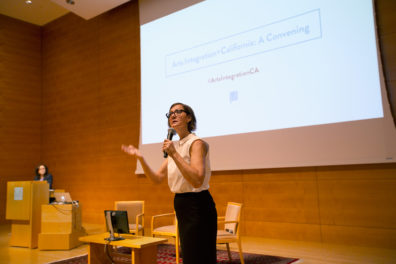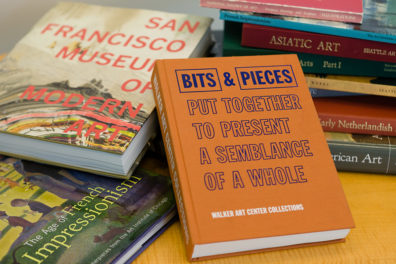
A Lady Walking in a Garden with a Child, about 1785, Thomas Gainsborough. Black chalk with stumping and heightened with white pastel, 20 x 8 11/16 in. The J. Paul Getty Museum, 96.GB.13. Digital image courtesy of the Getty’s Open Content Program
Thomas Gainsborough’s drawing presents us, at first sight, with an unspectacular scene. A young woman, accompanied by a child, takes a walk in a park-like setting. It is an image, though, that can give us deep insights into late-eighteenth-century habits and culture.
Gainsborough drew the background, the child, and even the woman’s face with just a few, quickly placed strokes. His main attention is instead on the woman’s multilayered dress. The woman unselfconsciously uses her left hand to pull it up, to keep it from touching the dirty ground. This produces movement, folds, and light reflections on the fabric’s surface, and Gainsborough tries to capture these effects as faithfully as possible, using white pastel to give the dress volume. Clearly, it is not only what the woman wears that is of interest to the artist but also how she wears it.
In the public parks of 18th century Europe and America, fashion became a crucial part of social life. Many cities built promenades where citizens—mostly from the upper classes—could gather, stroll up and down the alleys, and, maybe most significantly, demonstrate their mastery of the appropriate codes of dress and conduct.
“The formal promenade was first and foremost an arena of display,” writes British historian Peter Borsay, “a place where walkers could look and learn.” One of the most important things one could learn here was how to behave with “natural grace.” In the understanding of the time, this meant both to strictly follow etiquette and to make it seem easy and effortless. “To act without constraint,” as artist and writer William Hogarth defined this ideal comportment in 1753.
Gainsborough’s Lady Walking in a Garden is, among other things, about fashion’s pivotal role in this delicate social task. The more complicated the dress, the more impractical for walking, the more difficult it was to wear it with elegance and nonchalance—and the more admirable if one succeeded in displaying natural grace.
_______
This drawing is featured in the exhibition Art of the Fold: Drawings of Drapery and Costume at the J. Paul Getty Museum from October 6, 2015, to January 10, 2016.
Text of this post © Jan von Brevern. All rights reserved.




Comments on this post are now closed.